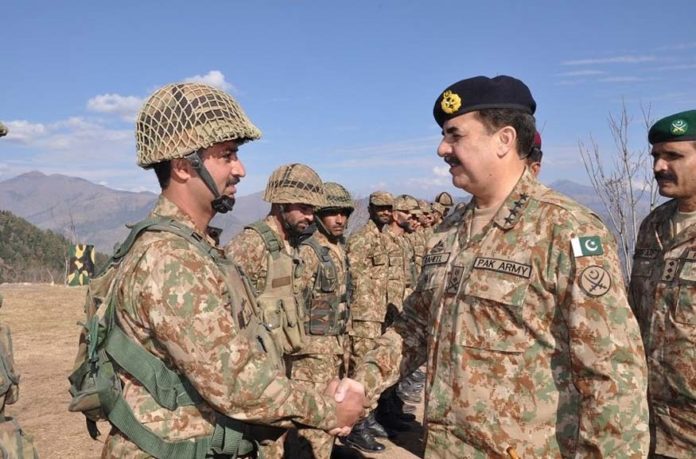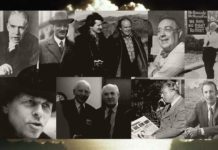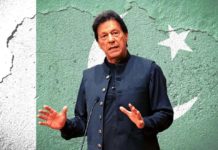The gift of 90 acres (36.4 hectares) of agricultural land near Lahore to Gen Raheel Sharif upon his recent retirement has raised quite a media storm. To sensibly debate this requires placing the issue into a larger context and examining worldwide trends. We must begin with the fact that those who spend their lives in militaries and put their lives at risk for their tribe, town, or country have always been rewarded.
I will not debate whether 90 acres is too much or too little, or pass judgement on whether the actual value is vastly less or hugely bigger than its putative pricing at Rs1.35 billion. ISPR points out — quite correctly — “that all such allotments are through constitutional provision” and that several other retired military officers have also received land grants. With urban spillover, however, to claim that these lands have no commercial value is not believable.
While every country rewards its men of war, levels vary hugely from age to age and from place to place. The Americans have never been large-hearted. The US Air Force Medal of Honor displays the single word ‘Valour’, and civic organisations award a Medal of Valour for physical courage. American servicemen and officers receive no material benefits from their government. Lt-Gen Lesley McNair — who served his country for 40 years, fought in two wars, trained an army of some 7,000,000 men and died on a French battlefield at the age of 61 — had left an estate of $2,720.
The Indians are relatively more generous. Gallantry awards fall into two categories: acts of gallantry in the face of the enemy, and acts of gallantry not in the face of the enemy. According to a military website, the top award in the first category is the Param Vir Chakra (PVC). It carries a cash award, which ranges from Indian Rs31 lakh (given by the Haryana government) down to Rs22,500 (given by governments of Gujarat, Karnataka, and Odisha). This is in addition to the monthly amount of Rs10,000 added to the PVC’s pension, as well as concessions for travelling on Indian Airlines, exemption from road tax, etc.
Gallantry has no place in this planet’s future wars. Technology will decide.
This is nothing to sneeze at, but in ancient times the rewards for brave men with swords and spears were immensely greater. The spoils of war included defeated populations, which were often enslaved. Captured women could be used at will and the children produced were absorbed into the victorious country’s population. Seized objects made of precious metals were highly prized as trophies of war. Today, war is still accepted as inevitable by most people. That’s because we are driven more by the primitive aggression of our reptilian brain-stems and less by the more complex civilised functions of our neo-cortexes.
But the situation for warriors is not quite so good anymore, and with time it’s only going to get worse. Territorial conquests are no longer possible (Israel seems to be the sole recent exception). More importantly, war technology is making heroism terribly difficult because physical courage is needed in smaller and smaller amounts. Modern weaponry sharply reduces, or even eliminates, direct contact between the hunter and the hunted, or between attackers and defenders.
Until a few hundred years ago, warriors fought their enemies with clubs, axes, spears, and swords. This meant that you had to be extremely strong and brave to make it to hero grade. Then came muskets, rifles, Gatling guns, tanks, and long-range artillery. Each development progressively lessened the need for bravery. By the time of the Second World War, entire city neighbourhoods could be set aflame by aerial bombing from a safe altitude. And today we all know that a single nuclear weapon, launched from a missile silo or deep sea submarine with the touch of a button, can obliterate an entire city.
The growing lack of heroic opportunities is now a major dilemma for the US military. Its most effective weapon system for overseas wars is currently the Unmanned Autonomous Vehicle (UAV, more commonly known as a drone). But, while moving a joystick or pressing the missile release button may call for some special training, killing by drone does not qualify as a heroic deed. Even if media, animations, and doctored images say otherwise, ideologies of individual heroism are already anachronistic.
American military writer and Pentagon insider, James Perry Stevenson, is frustrated by this trend. He acerbically comments that the typical 21st-century American general is now a walking wall of multicoloured ribbons given for small things, “resulting in a display not unlike that of a Latin American potentate”. His vivid comparison of Second World War hero Gen Omar Bradley with Gen David Petraeus is not very flattering.
Nevertheless, fighter pilots and combat soldiers can still aspire to be war heroes. But they had better be quick, because by the end of this century — if not earlier — they too will be made redundant by aircraft piloted by artificial intelligence (AI). Super agile killer robots equipped with laser guns will displace the infantryman and his automatic rifle.
I spent last week in Geneva working with a group — one that advises the UN secretary general — on the implications of AI autonomous weapon systems. Without any human intervention, such weapons can select their own targets and then proceed to destroy. We listened to academic and industry experts speak about a specific development — one that is no more than 10-20 years away. Research in some countries is now directed at making armed sparrow-sized mini-drones, swarms of which can be launched from an aircraft or mother drone. Each mini-drone would be capable of recognising multiple categories of people and taking out particular individuals.
Gallantry will have little place in this planet’s future wars — at least those between states. Technology will confront technology, with humans simply entering policy algorithms into robots on land, sea, air and space. AI will also arrange logistics for military campaigns. Good or bad, that’s the way it’s going to be.
Question: when men of war become button pushers, how much land should they get upon retirement?
Written by Dr. Pervez Hoodbhoy. He teaches physics in Lahore and Islamabad. Since 2013 he has been a member of the UN Secretary General’s Advisory Board on Disarmament Affairs. Published in Dawn, February 4th, 2017.







